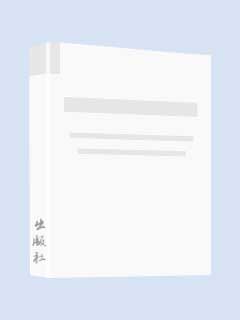现代控制理论(英文版)
作者: 胡健、刘丽娜
出版时间:2012年3月
出版社:国防工业出版社
- 国防工业出版社
- 9787118079975
- 121195
- 0046175981-3
- 16开
- 2012年3月
- 186
- O231
- 自动化
- 本科
《现代控制理论》可作为自动化、电气工程厦其自动化等专业高年级本科生以厦控制科学与工程、电气工程等学科研究生学习现代控制理论双语课程的教材也可作为学习高级宏、微观经济学的经济、管理学科研究生的辅助教材。
Chapterl State Space Description
1.1 Definition of State Space
1.1.1 Exmple
1.1.3 State Space Description
1.1.4 Transfer Function Matrix
1.2 Obtaining State Space Description from I/O Description
1.2.1 Obtaining State Space Description from Differential Equation
1.2.2 Obtaining State Space Description from Transfer Function
1.2.3 Obtaining State Space Description from Block Diagram
1.3 Obtaining Transfer Function Matrix from'State Space Description
1.4 Description of Composite Systems
1.4.1 Basic Connection of Composite Systems
1.4.2 Description of the Series Composite Systems
l.4.3 Description of the Parallel Composite Systems
1.4.4 Description of the Feedback Composite Systems
1.5.1 Eigenvalue and Eigenvector
1.5.2 State Transformation
1.5.3 Invariance Properties of the Stare Transformation
1.5.4 Obtaining the Diagonal Canonical Formby State Transformation
1.5.5 Obtaining the Jordan Canonical Form by State Ttansformation Problems
Chapter2 Time Response of the LTI System
2.1 Time Response of the LTI Homogeneous System
2.2 State Transition Matrix
2.2.2 Properties oi the State Transition Matrix
2.3 Calculation of the Matrix Exponential Function
2.3.1 Direct Method
2.3.2 Laplace Transform Method
2.3.3 SimdariTy TransfoRation Method
2.3.4 Cayley Hamihon Theorem Method
2.4 Time Response of the LTI System
Chapter3 Stability of the control System
3.1 The Basics of Stability Theory in Mathematics
3.2 Lyapunov Stability
3.2.1 Equilibrium Point
3.2.2 Cocepts of Lyapunov Stability
3.3 Lyapunov Stability Theory
3.3.1 Fyapunov First Method
3.4 Application of Lyapunov 2 Method to the LTI System
3.5 Construction of Lyapunov Function to the Nonlinear System
Chapter4 Controllability and Observability
4.1 Controllability of The LTI System
4.1.1 Cntrollability
4.1.2 Criteria of ControlIabillty
4.2 Observability of The LTI System
4.2.1 Observahility
4.2.2 Criteria of ()bservability
4.3 Duality
4.4 Obtaining the Controllable and Observable Canonical Form by State Transformation
4.4.1 Obtaining the Controllable Canonical Form by State Trahsformation
4.4.2 Obtaining the Obserable Canonical Form by State Trarlsformation
4.5 CanonicaI Decomposition of-the LTI System
4.5.1 Controllable Canonical Decomposition
4.5.2 Observable Canonicl,Decompqsition
4.5.3 Canonical Decomposition
4.6 MinimaI Realization of the LTl System
4.6.1 Realization Problem
4.6.2 Realization of SISO System
4.6.3 Realization.of MIMO System
4.6.4 Minimal Realization Problems
Chapter5 Synthesis of the LTI System
5.1 State Feedback ControI of the.LTI System
5.1.1 State Feedback
5.1.2 Controllability and Observability of the Closed-Loop System
5.1.3 Poles Placement by State Feedback Control
5.1.4 Zeros of the Closed—Loop Systemr
5.2 Design of the State Observer
5.2.1 Full—Order State Observer:
5.2.2 Design of the Full-Qrder State Observer
5.3 Feedback System with the State ObserverProblems
Chapter6 Discrete Time Control System
6.1 State Space Description of Discrete Time System
6.1.1 State Space Description of.Discrete Time System
6.1.2 Obtaining State Space Description from Difference Equation orImpulse Transfer Function
6.1.3 Obtaining Impulse Transfer Function Matrix from StateSpace Description
6.2 State Equation Solution.of Discrete Time LTI System
6.2.1 Iterative Method
6.2.2 Transform Methodi
6.2.3 Calculation of the State Transition Matrix
6.3 Data.Sampled Control System
6.3.1 Realization Method
6.3.2 Three Basic Assumptions
6.3.3 Diseretization from the State Solution of Continuous Time Systern
6.3.4 Approximate Discretization
6.4 Discrete Time System Stability Analysis and Criteria
6.4.1 Lyapunov Stability




